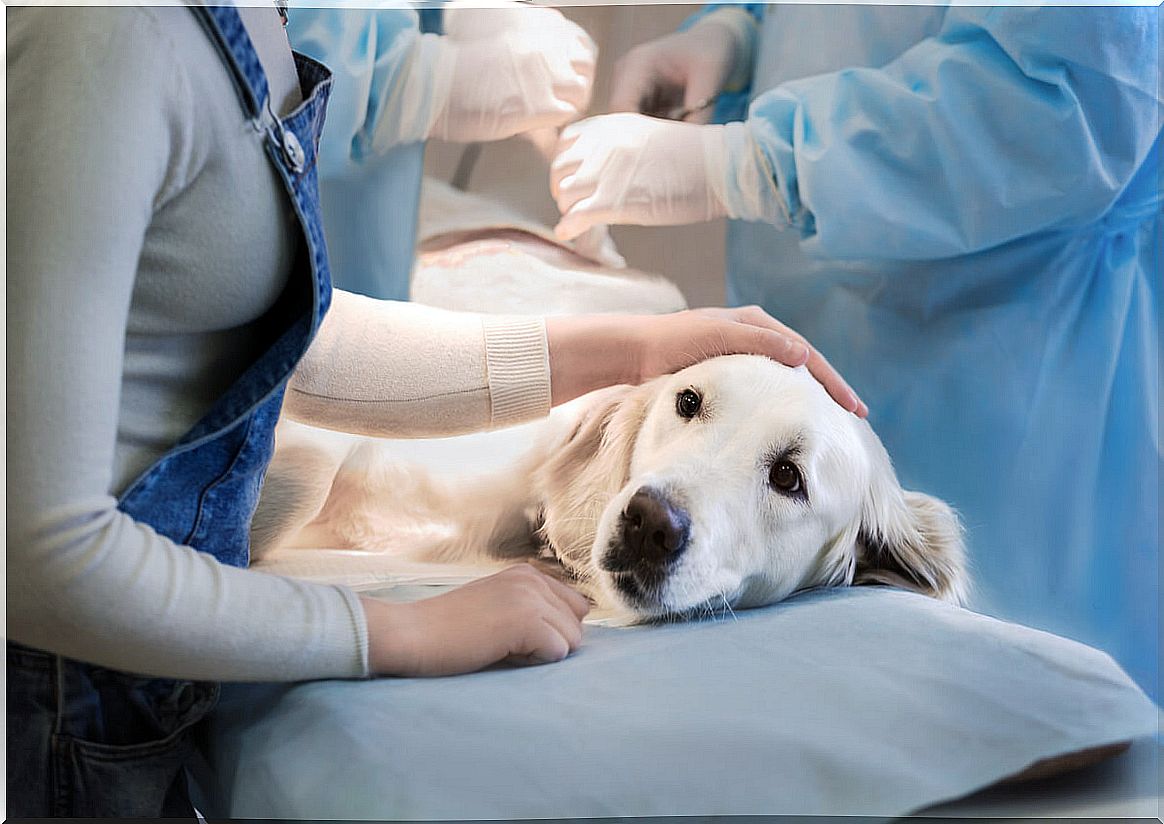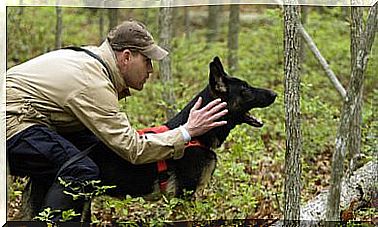Breast Cancer In Dogs: What Are The Causes?

Breast cancer and other types are some of the most frequent and disastrous pathological processes that exist today. Due to the therapeutic impossibility of certain types of neoplasms, the diagnosis of cancer is almost always bad news. Luckily, medicine advances and more and more stories end in a happy ending.
Breast cancer is one of the most frequent, both in human and veterinary medicine. Today we are going to focus on talking about the causes behind the appearance of this type of neoplasm in the canine patient. Read on if you want to know the reasons for breast cancer in dogs.
Breast cancer in dogs
Breast cancer is defined as a malignant tumor, that is, a proliferation of breast tissue with metastatic potential. Metastasis is the ability of a cancer to invade other body tissues and reproduce different cancerous growths in different locations.
A cancer must be differentiated from a benign tumor since, in the latter, cell proliferation has a non-invasive development and does not pose a danger to the health of the animal – as there is no risk of metastasis.
The only problem that can exist in these cases is that the growth is so aggressive that it oppresses some vital structure. However, in the case of a breast tumor, this is rare. Here are the main causes of breast cancer in dogs.

Genetic causes
As in most neoplastic processes, breast cancer in dogs has a high hereditary component. Several articles have been written that relate the alteration in certain genetic sequences with the development of this type of pathological process.
However, this line of research remains open, both in human medicine and in veterinary medicine. New studies continue to be developed every day that shed more light on the complex relationship between genetics and the appearance of tumor and cancer processes.
Environmental factors
The implication of environmental agents on the development of malignant tumors is well known. In human medicine we have the examples of the relationship between tobacco and external pollutants and lung cancer or diet and colon cancer.
In the case of breast cancer in dogs, things were not going to be different. However, this causality is much less studied and documented. Along these lines, there are articles that relate exposure to certain polluting substances with the predisposition to suffer this type of pathological process.
For example, certain chemicals, such as insecticides of the pyrethroid family, seem to be directly related to the emergence of these tumor processes. Still, more research is required to confirm these hypotheses.
Drugs with potential carcinogenic activity
All drugs have a series of contraindications that are worth knowing before being used. Similar to the previous example, exposure to certain medications administered to the canine patient can promote the development of breast cancer.
This does not mean that its use necessarily entails the appearance of these neoplastic processes. Even so, we must report that a direct causal relationship has been documented between both events.
For example, we are talking about certain drugs such as those used for hormonal suppression of heat in bitches. First-generation progestogens —such as medroxyprogesterone acetate or megestrol acetate— induce the formation of a secretory endometrium, a fact that increases the incidence of mammary neoplasms.
Non-sterilization
The decision to sterilize a pet or not is always a personal one. In addition, the animal must be correctly evaluated by a veterinarian. In the topic that concerns us today, we could not forget to mention the direct relationship that exists between the early sterilization of canine females with a lower incidence of the development of tumors and breast cancers.
Therefore, we could summarize that not sterilizing canine females considerably increases the chances of developing these pathological processes.

As you have been able to read, there are several factors that predispose to the development of breast cancer in dogs. Some of them can be avoided, while others, unfortunately, are beyond the control of the guardian and the veterinary professional.
We take this opportunity to remember the importance of performing a frequent examination of the mammary chains of female canines. This is done in order to detect early any type of alteration that puts the tutor on suspicion of the existence of a tumor process.









